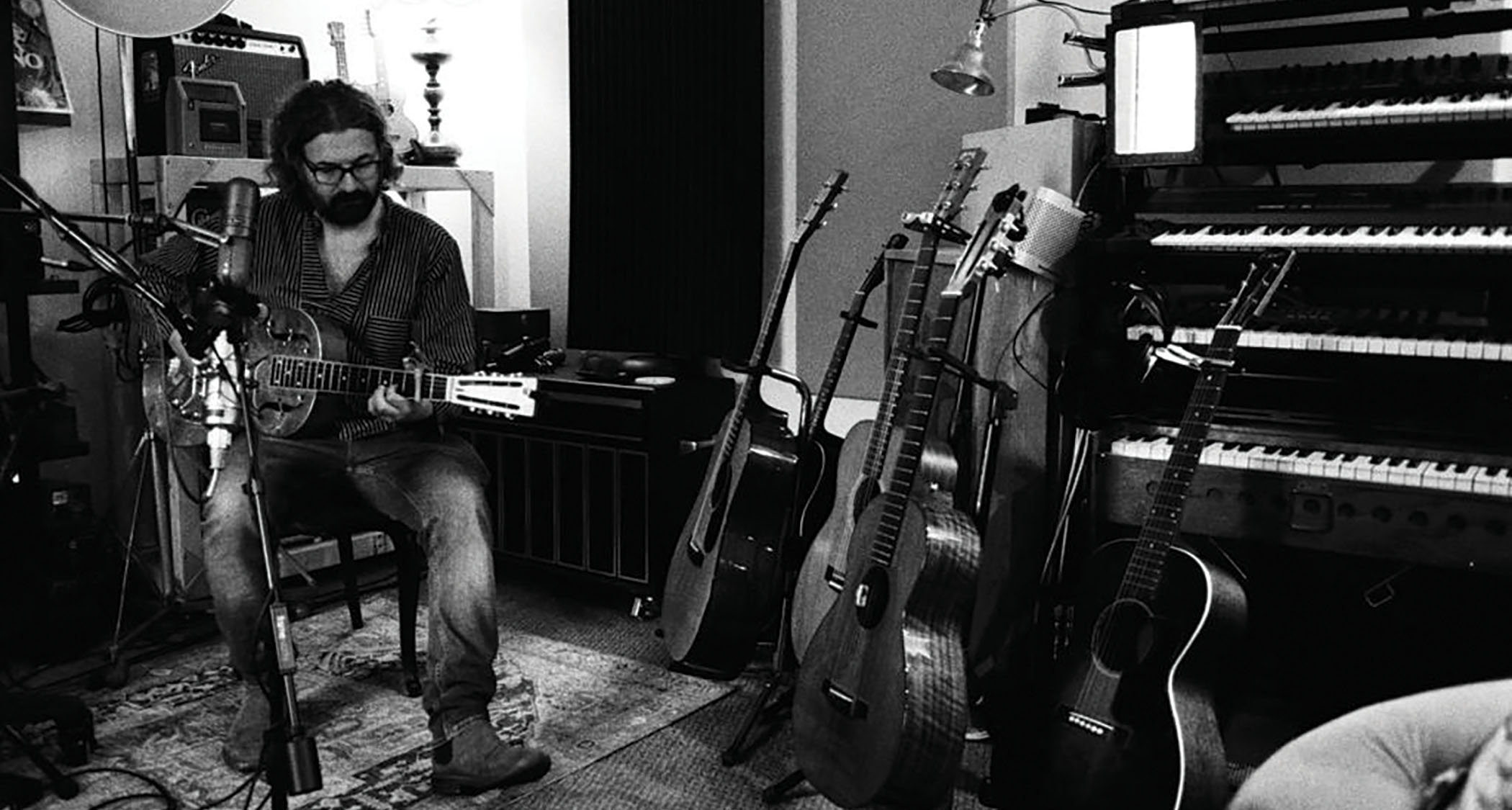“The last thing I wanted to make was a beautiful but soulless DADGAD album… I wanted bits of spit and sawdust, scuff notes here and there”: Jamie Dickson on the tragedy and joy of his acoustic folk debut – and a Martin deal that felt too good to be true
Withershins is required listening for anyone yearning for the fingerstyle folk heyday of Bert Jansch et al, and an antidote to the pristine acoustic recordings of the modern era

If you’re a fan of vintage folk heroes like John Martyn, Nick Drake and Bert Jansch, Withershins by Jamie Dickson may very well end up being one of your favorite releases of 2024.
The debut solo full-length from the editor-in-chief of Guitarist magazine is a love letter to earthy acoustic guitar sounds of the past, transporting the listener to a private serenade in a dark, fire-lit room. Evocative and intimate in feel, with real-life noises and guest musicians adding color, its natural warmth is rooted in a time when more emphasis was placed on musical honesty than anything too forced or contrived.
“The last thing I wanted to make was a beautiful but soulless DADGAD album,” Dickson says. “I wanted it to feel like a piece of art in the sense of there being tragedy and joy stitched into these tracks. Most final versions were the second take, with a natural live energy. We definitely weren’t trying to make an acoustic version of Def Leppard’s Hysteria, where they famously separated out chords into single notes!”
Three albums were sent to producer Chris Turpin (Ida Mae) for reference: Près de Paris by Pierre Bensusan, Solid Air by John Martyn and The Black Balloon by John Renbourn. The bar for quality and candor was set rather high in that regard.
“I actually wanted bits of spit and sawdust, scuff notes here and there, because I love all that ’70s stuff,” Dickson says. “We wanted to stay away from anything too pristine, like perfect-sounding digital reverb.”
The main guitar for the sessions was a 2002 Martin 000-14 that had been listed on Reverb for less than the going market rate. It felt too good to be true, and the questionable photos were also a cause for concern; but after a year of searching, buying and trading, Dickson gave in and visited the seller to find out more. Luck was on his side that day.
“It was waiting for me the whole time,” he says. “It belonged to an old Irish session musician. He flipped the case open and it was perfect for my style, already tuned to DADGAD. I like to conserve energy, so I tried to keep strings ringing to maintain a lovely harp-like shimmer and glow. DADGAD works so well for that.
Get The Pick Newsletter
All the latest guitar news, interviews, lessons, reviews, deals and more, direct to your inbox!
“I used a Beard Deco Phonic for the standard-tuning stuff, a National on one song and a 1957 Martin 0-18 for the title track. I was looking for sounds that felt old and very physical, with the kind of kinetic motion that can’t be replicated.”
- Withershins is out now.
Amit has been writing for titles like Total Guitar, MusicRadar and Guitar World for over a decade and counts Richie Kotzen, Guthrie Govan and Jeff Beck among his primary influences as a guitar player. He's worked for magazines like Kerrang!, Metal Hammer, Classic Rock, Prog, Record Collector, Planet Rock, Rhythm and Bass Player, as well as newspapers like Metro and The Independent, interviewing everyone from Ozzy Osbourne and Lemmy to Slash and Jimmy Page, and once even traded solos with a member of Slayer on a track released internationally. As a session guitarist, he's played alongside members of Judas Priest and Uriah Heep in London ensemble Metalworks, as well as handled lead guitars for legends like Glen Matlock (Sex Pistols, The Faces) and Stu Hamm (Steve Vai, Joe Satriani, G3).
Ozzy Osbourne’s solo band has long been a proving ground for metal’s most outstanding players. From Randy Rhoads to Zakk Wylde, via Brad Gillis and Gus G, here are all the players – and nearly players – in the Osbourne saga
“I could be blazing on Instagram, and there'll still be comments like, ‘You'll never be Richie’”: The recent Bon Jovi documentary helped guitarist Phil X win over even more of the band's fans – but he still deals with some naysayers












